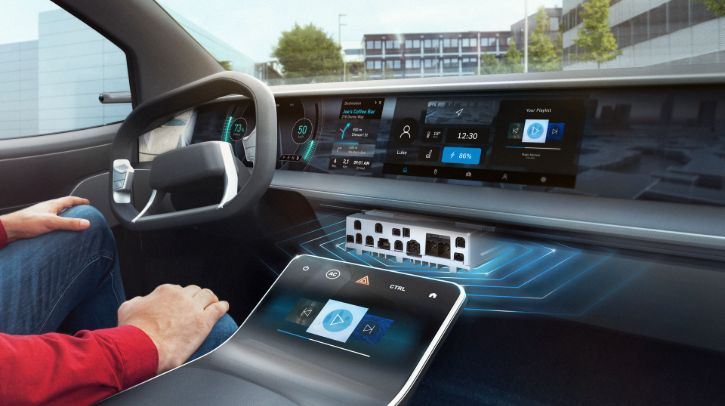Bosch Mobility, a specialist in software and hardware solutions for connected, automated and electrified vehicles, has received its first customer order in China for a high-performance computer that will be used to create a cockpit with artificial intelligence.
AI Cockpit
The computer, which has a system-on-chip (SoC) that processes data from a large language model, will be used to create the AI Cockpit in which the “driver can talk to the vehicle in a completely natural way and interact with it as if it were a human being”, Bosch says. New functions and applications will be available going forward via over-the-air software updates.
The computer from Bosch is also “fusion-capable”, meaning it can, for example, merge different domains such as infotainment and driving assistance on one SoC, which reduces installation space and cabling, and therefore also lowers costs.
Production of this cockpit vehicle computer, which a Chinese auto maker will install in select models, will start this year with a six-digit number of units.
“Bosch is driving developments in China at high speed and successfully bringing them to market. This applies in particular to the areas of infotainment, driver assistance and electromobility,” said Stefan Hartung, chairman of the board of management of Robert Bosch, at this year’s Auto Shanghai event.
“Bosch is also one of the innovation leaders in the competitive Chinese market. Our products are well received. This is underlined by our growth in China and the new orders we have won.”
Expanded advanced driver assistance systems
Bosch also used the automotive show to launch a new-generation radar sensor with an in-house design and its own system-on-chip (SoC), as part of its efforts to reposition its ADAS product family.
The new radar sensor uses RF CMOS technology, which enables the integration of high-frequency and digital circuits on a single chip, and is compact in size (the transistors measure 22nm). Bosch states that it is the first Tier 1 supplier on the market to introduce this technology in serial production.
The Bosch portfolio for software-defined vehicles is a flexible modular system for driver assistance functions. Bosch says that its ADAS product family “enables manufacturers worldwide to bring such functions to the mass market faster and more cost-effectively” and that it has already won half a dozen new customers in China for its ADAS portfolio in the mid- and high-end segments, including BAIC, Dongfeng and Jetour.
Auto makers can choose between three preconfigured variants in the Bosch ADAS portfolio and integrate these into their production vehicles. The variants cover all vehicle segments from entry-level to mid-range and premium vehicles. Alternatively, individual modules can be flexibly combined as required. These options enable manufacturers to integrate driver assistance systems in a brand-specific way.
“China is an extremely competitive market with demanding, technology-savvy drivers. Bosch works with almost all Chinese manufacturers, but also with numerous international auto makers operating in China,” said Markus Heyn, member of the board of management of Robert Bosch GmbH and chairman of Bosch Mobility.
The demand for advanced driver assistance systems is high among Chinese manufacturers – more than half of new passenger cars sold in China in 2024 had Level 2 solutions or higher – and rapid growth is expected until the end of the decade, Bosch says.
In related news, Honda has presented the GAC Honda GT and Dongfeng Honda GT, the two latest models in its Chinese-only 烨 (yè) Ye Series of electric vehicles, at Auto Shanghai 2025 . Click here to read the full story.


